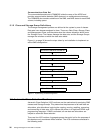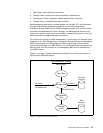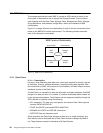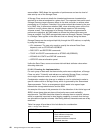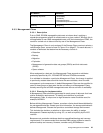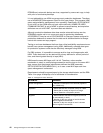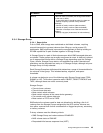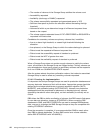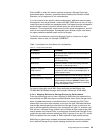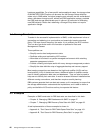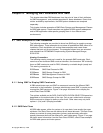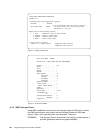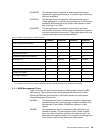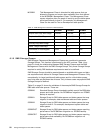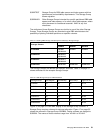44 Storage Management with DB2 for OS/390
• The number of volumes in the Storage Group satisfies the volume count
• Accessibility requested
• Availability (dual copy or RAMAC) requested
• The volume was explicitly requested and guaranteed space is YES
• Sufficient free space to perform the allocation without exceeding the high
threshold
• Volumes fall within a pre-determined range of millisecond response times
based on the request
• The volume supports extended format if EXT=PREFERRED or REQUIRED is
requested in the data class
Candidates for secondary volumes are primary volumes that, in addition:
• Are at or above high threshold, or exceed high threshold following the
allocation.
• Are quiesced, or the Storage Group to which the volume belongs is quiesced.
• Did not meet the requested millisecond response time.
• Did not meet the accessibility request of standard or preferred.
• Did not meet the IART of greater than zero.
• Did not meet the availability request of standard or preferred.
When a Storage Group does not contain enough volumes to satisfy the volume
count, all volumes in the Storage Group are flagged tertiary. Tertiary volumes are
only selected when there are no primary or secondary volumes and the request is
for a non-VSAM non-GUARANTEED SPACE request.
After the system selects the primary allocation volume, that volume's associated
Storage Group is used to select any remaining volumes requested.
5.3.4.2 Planning for Implementation
It is important that unique Storage Groups are used for production databases and
recovery data sets, because of their critical status. Appropriate groups should be
defined by the storage administrator to prevent automatic migration (AUTO
MIGRATE), and automatic backup (AUTO BACKUP). However non-production
databases should be considered for placement on standard primary volumes
(possibility shared with other data types), as their availability is normally not as
critical.
DB2 allows the DBA to define a collection of volumes that DB2 uses to find space
for new data set allocation, known as STOGROUPs. When converting DB2
databases to SMS, and DB2 STOGROUPs are used to manage DB2 database
data, one way is to design the SMS Storage Groups so they are compatible with
existing STOGROUP definitions.
Once the conversion is complete, it is recommended that SMS be used, rather
than DB2 to allocate databases. To allow SMS control over volume selection,
define DB2 STOGROUPs with VOLUMES(*).



